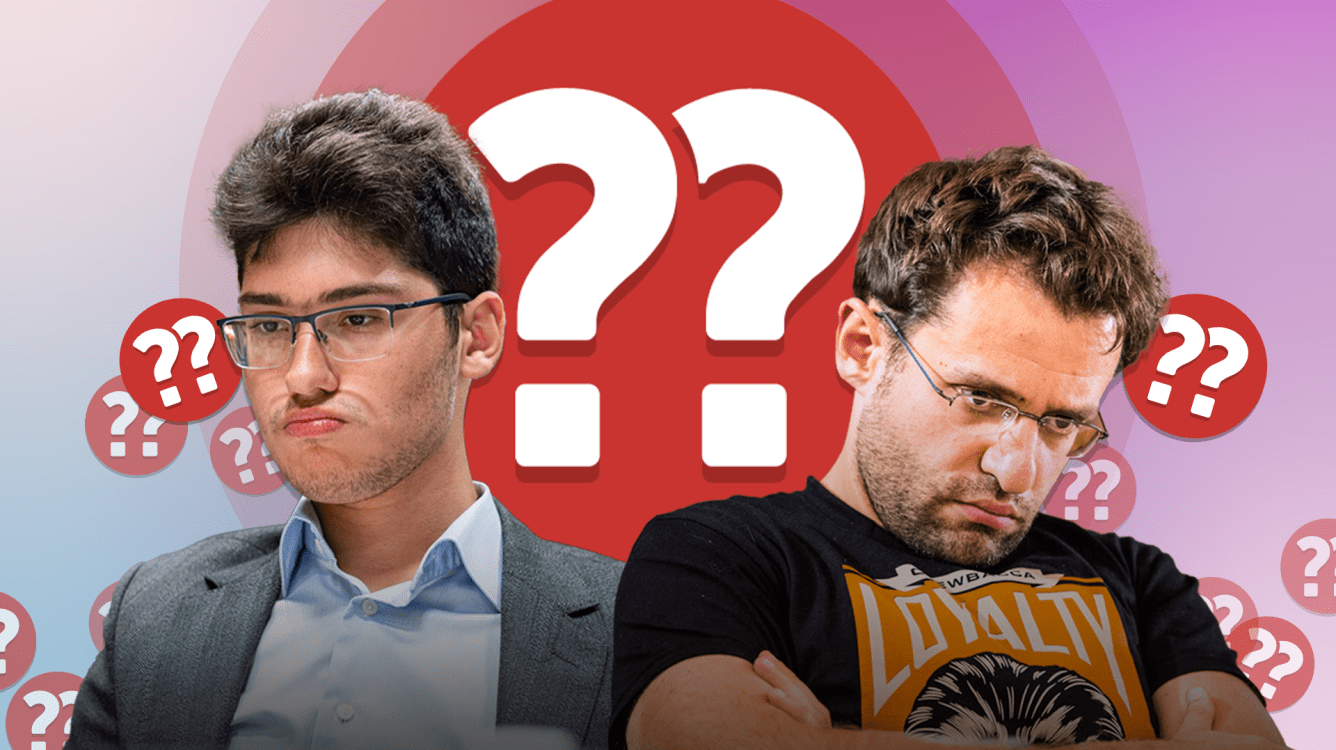
Learn From Super Grandmasters' Blunders
The FTX Crypto Cup was an exciting tournament where any chess player could find something to love. For me, the most attractive part of the tournament was its abundance of blunders. Yes, you read that correctly! Now, let me explain my point.
I noticed a long time ago that we remember big blunders much better than brilliant moves. For example, if I ever mention GM Tigran Petrosian to my students, I frequently hear, "Isn't that the guy who dropped his queen in one move?" Of course, they are referring to the following infamous game:
You see, World Champion Petrosian played hundreds of great games and thousands of brilliant moves. Yet, for many less experienced players, he is still "the guy who blundered his queen." Why is that the case? Well, whenever a strong grandmaster, or better yet, a world champion, makes a huge blunder, it gives hope to many lower-rated players.
Here's their reasoning: "Yes, I make dozens of blunders in every single game, but it is not that bad considering that a super grandmaster blundered a checkmate in one move. It means that I still have a chance to become a grandmaster or even the world champion one day."

So, world champions' blunders give some comfort and hope to us mere mortals. Therefore, we remember such blunders for a long time.
Here I see a big opportunity for us chess coaches. If most chess players remember grandmasters' mistakes so well, why not turn them into learning experiences? Let's start with the biggest blunder of the tournament, where a super-talented player blundered checkmate in one move.
It is a blitz game, so blunders are inevitable, but my guess is that one of the contributing factors was that White was winning. It is quite similar to Petrosian's game above and quite typical for many players: when we have a winning position, we tend to lose our sense of danger. The thinking that "the game is pretty much over already" is not exactly what helps you to focus better. As a result, blunders in a completely winning position are quite common in chess.
Here is another case of an unbelievable blunder:
How could a super GM like Alireza Firouzja make such a mistake in a basic position? By the way, if you think that the position is not really basic, look at the following game. This is how a chess player who is 500 rating points lower than Firouzja easily made a draw. The position is so simple that he, unfortunately, had no chance of going wrong. Why did I say, "Unfortunately"? Well, here is the game:
So, why did Firouzja make a mistake in such a basic endgame? Yes, he didn't have much time on his clock, but if you know this theoretical position, then you should make a draw without much trouble—especially when you consider that the game had an increment. Let's take a look at the game, which was played just three days later!
Again Firouzja had the same rook endgame with rook and bishop pawns, and again it is a theoretical draw. The first fundamental research on this endgame was done by GM Mikhail Botvinnik in 1949. He recommended keeping Black's rook on a1, where it can check both horizontally and vertically.
It is very difficult to hold endgames like this when you have seconds on your clock. Nevertheless, the knowledge of the key ideas makes it possible. It seems to me that somehow Firouzja neglected this specific endgame study; hence, the result. It is not the first time that a chess player, who I call a future world champion, botched a basic endgame. I think this could be a major area for his improvement. Meanwhile, if a former world number-two makes such basic mistakes, then all of us would greatly benefit from studying endgames!

While we are talking about world number-two players, former second-highest player GM Levon Aronian immediately comes to mind. In this tournament, he made a mistake that I do not recall ever seeing in grandmaster games! Judge for yourself:
This is simply an unbelievable sequence of moves. First, by playing 67.Bd2??, White offers to trade his h4-pawn for Black's f4-pawn. It should go without saying that these pawns don't have the same value. While winning the f4-pawn gives White absolutely nothing since his own f3-pawn will never become a passer, Black's h5-pawn immediately becomes an outside passed pawn, which should quickly decide the game.

To my amazement, Duda didn't accept the offer but played 67...Kd7??, allowing White to fix his mistake by playing 68.Be1. Instead, Aronian insisted on the trade, and as the result, the game was pretty much over right away.
My only explanation of Duda's howler 67...Kd7 is that he had expected 67.Bf2 and simply pre-moved. Otherwise, I do not know what to think about this double blunder. One way or another, it is an unbelievable example of two super grandmasters failing the ABCs of endgames.
The goal of this article is not to make fun of super GMs. As a matter of fact, I still believe that Firouzja will become the world champion one day. As I mention above, the bigger a mistake, the easier chess players can learn from it. Therefore, at the very least, I am sure that from now on, you, my dear readers, will never give an opponent outside passed pawns in endgames.






